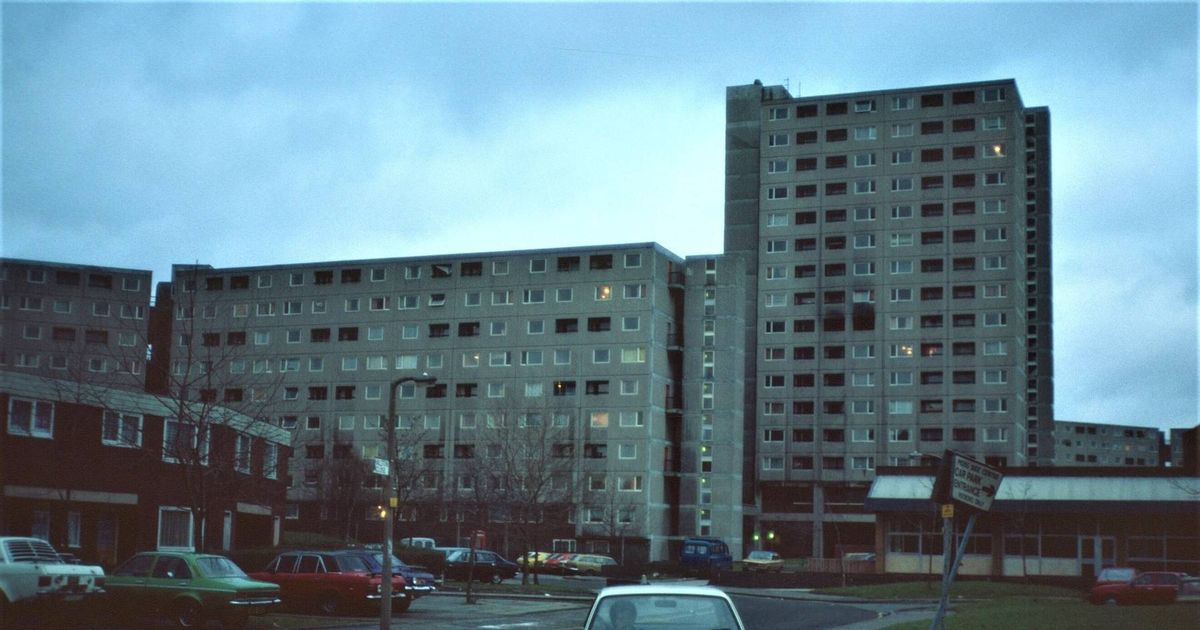It was part of the largest redevelopment zone in Europe at the time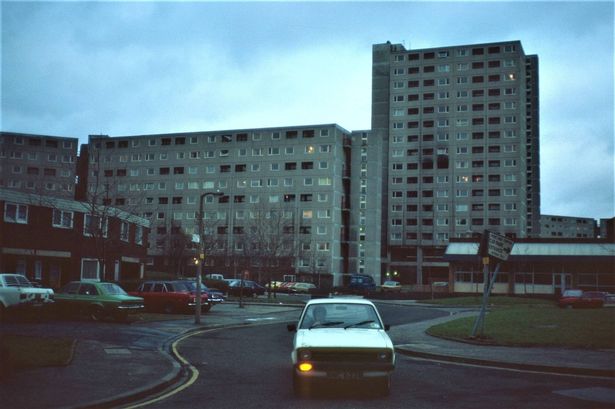 Multi storey blocks in the Moss Side District Centre, Circa 1985(Image: Prof. Miles Glendinning @ The University of Edinburgh (CC BY 4.0))
Multi storey blocks in the Moss Side District Centre, Circa 1985(Image: Prof. Miles Glendinning @ The University of Edinburgh (CC BY 4.0))
A shopping centre said to have failed due to gang intimidation and violence, lasted less than two decades before it was demolished. Now demolished, the rapid demise of Moss Side shopping centre was documented in newspaper reports at the time.
The precinct was at the heart of plans for the creation of the Moss Side District Centre in the late 1960s. The Moss Side District Centre was part of the largest redevelopment zone in Europe at the time, designed to serve over 60,000 people in Moss Side, Whalley Range, and Hulme.
It boasted a state-of-the-art shopping centre, library, adult education centre and a recreation complex that included a sports centre with two swimming pools and three squash courts.
Concrete maisonette blocks, ranging from six to 13-storeys high, were built to house the community surrounding the precinct. The residential cost of building these homes amounted to £2.5m, while the commercial heart of the estate, including the shopping centre, exceeded £3m.
However, even before the completion of the shopping centre, there were clear signs that all was not well. The Manchester Evening News reported several instances of the new built housing blocks being infested with bugs and mice.
Love Greater Manchester’s past? Sign up to our nostalgia newsletter here
A report in the Guardian newspaper claimed the problems were caused from the flawed construction techniques and their design creating “ideal conditions for insect and animal pests to thrive.”
After protests from residents who had settled into the flats, which were then less than five years old, the council was forced to tackle the infestations, we previously reported.
Replacing the existing shopping districts at Alexandra Road, Princess Road and Stretford Road, the Moss Side development officially opened to the public in April 1975.
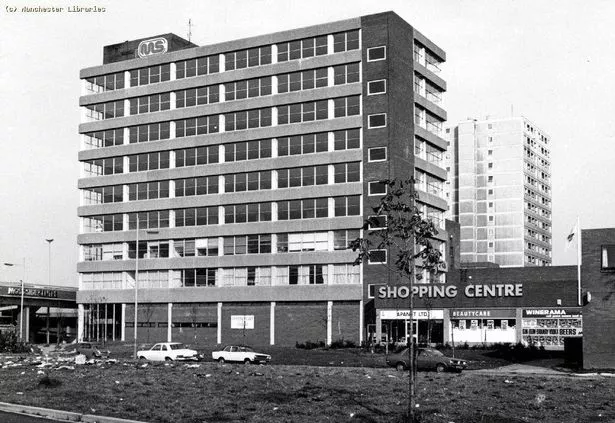 Moss Side Shopping Centre (Image: @Manchester Libraries)
Moss Side Shopping Centre (Image: @Manchester Libraries)
On its opening day, the MEN reported: “The complex, called Moss Side District Centre, is planned to make shopping more enjoyable and features a sports centre which has a wide variety of activities.
“The centre, built on a 35-acre site at the junction of Moss Lane East and Princess Road, houses 83 shops, seven large stores and a covered market. The entire centre is covered and heated to protect the shoppers from the weather.”
However, the centre encountered difficulties soon after opening, with major retailers pulling out during its first few years.
On January 23, 1978, the Manchester Evening News published the first instalment of a four-part investigation examining how ambitious plans to transform Moss Side into “a modern redeveloped inner-city zone” had so far failed.
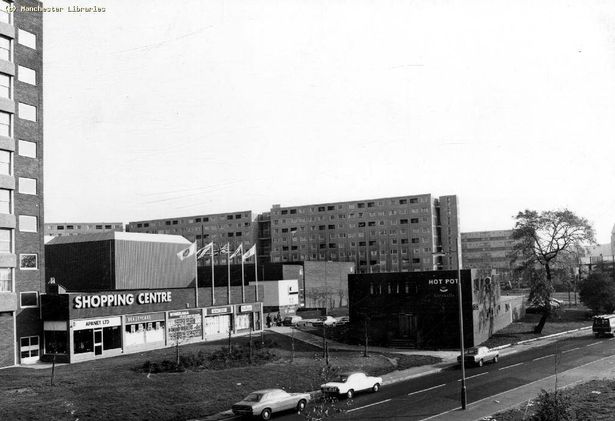 Moss Side shopping centre next to the Hot Pot pub(Image: @Manchester Libraries)
Moss Side shopping centre next to the Hot Pot pub(Image: @Manchester Libraries)
Reporter Eric Towner claimed the dream to convert Moss Side into a “text book model for harmonious community living” was at risk of collapse due to a mixture of “acute social pressures and short-sighted planning.”
This “undercurrent of discontent,” Towner wrote, could be seen most visibly in the problems experienced a the shopping and leisure complex which Towner wrote had become: “An unpopular symbol of outside authority’s mistakes, leaving local people resentful that they weren’t sufficiently consulted about its planning.”
Towner referenced accounts of “an alarming chapter of vandalism and violent attacks” since the district centre had opened two-years earlier. Towner wrote: “The sports centre was hit by wreckers within six days of opening.
“And twice, last year, staff staged 24 hour strikes in protest at attacks on leisure centre attendants.”
He included accounts of “sporadic violence” that had seen “big name traders like Boots and Asda supermarkets closing after claiming staff had been terrorised by local toughs.”
Join the Manchester Evening News WhatsApp group HERE
In the second part of the special investigation, Towner focused his attention on the particular challenges confronting the new shopping precinct and leisure centre.
Joblessness and truancy were identified as significant contributors to the antisocial behaviours of youths at the complex, worsened by steep fees to access the cutting-edge leisure facilities, leading to some unemployed youth feeling “resentful” that it had become a “magnet for outsiders” who could afford it.
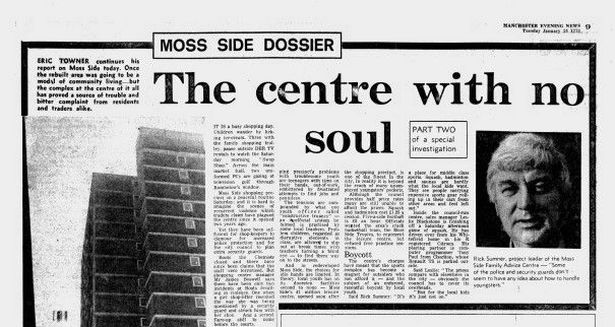 Manchester Evening News special report on Moss Side – Part Two. January 24, 1978
Manchester Evening News special report on Moss Side – Part Two. January 24, 1978
By 1978, the city council had purchased the precinct from its private developers, Ravenseft Properties, as a “social duty” for £1.5m.
After the council takeover, closed circuit TV cameras were fitted to tackle shoplifters and antisocial behaviour, alongside the hiring of extra security staff.
A suggested rebrand to the Alexandra Centre was also proposed “to consign the precinct’s infamous past to history once and for all.”
In 1980 the Manchester Evening News covered a council debate which disclosed that 28 out of 63 of the shopping centre’s tenants had been refusing to pay rent, whilst others had gone bankrupt.
One councillor claimed that there had been “a total breakdown of law and order and tenants are terrorised.”
By April 1981, merely six years after it opened, the district centre and its shopping precinct had acquired an unenviable reputation. But worse was still to come.
After riots took place elsewhere across the UK, including Bristol, Brixton, Southall and Toxteth, in July 1981, Moss Side was hit by a 48-hour period of rioting involving white and black youths.
The disturbances started early in the morning of July 8th amidst a backdrop of widespread unemployment and simmering racial tensions: police officers had been accused of racially abusing and using excessive force against black youths in the area.
As the riots broke out, several shops were ransacked on Princess Road, with a petrol bomb being set alight at the Moss Side Shopping Precinct.
It marked a two-day eruption of frustration, anger and violence that witnessed rioters attack Moss Side police station, reportedly led by a nine-year-old boy.
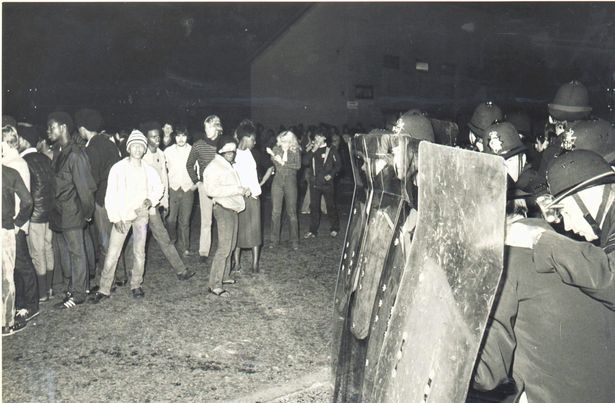 Moss Side Riots, 1981
Moss Side Riots, 1981
In the aftermath of the riots, the fate of Moss Side’s shopping precinct continued its downward spiral. In November 1983, the MEN reported the shopping centre was in crisis and on the brink of financial collapse.
The council leader at the time, Cllr William Egerton, emphasised the need to attract more visitors to the centre, arguing that if it were bustling, gangs of youths would appear insignificant.
He denied suggestions it was any worse than other shopping centres regarding disorderly and troublesome conduct, and disputed claims by Conservative councillors that residents avoided the area due to mugging fears.
“There is no underlying problem of security there,” he said. “People do not want a stalag-type security system, with armed guards strutting around.”
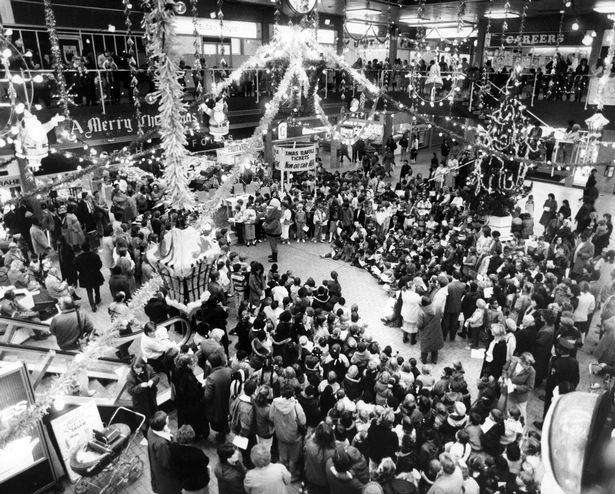 Christmas lights being switched on at the Moss Side shopping centre. November 28, 1986(Image: Mirrorpix)
Christmas lights being switched on at the Moss Side shopping centre. November 28, 1986(Image: Mirrorpix)
By the 1990s, the Moss Side area of Manchester was attracting negative national media attention. In 1993, a Sunday Telegraph journalist visited and observed: “The dreadful Moss Side shopping centre, soon to be closed, is virtually empty.
“A school uniform outfitter improbably seems to be thriving. A concrete walkway at first-floor level leads to one of the notorious concrete terraces, also doomed to demolition.”
Adding: “From behind, the terraces look like the back of football stadiums with many windows burned out. In front, the grass ‘play’ area is littered with rubbish, including syringes, the windows boarded up and power cut off.”
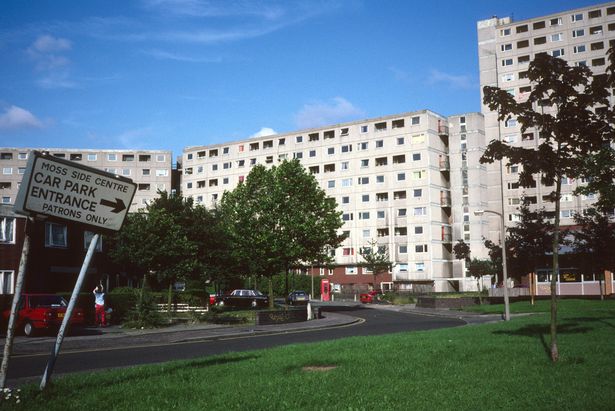 Tower blocks surrounding Moss Side District Centre, 1987(Image: By Miles Glendinning – https://doi.org/10.7488/ds/6241, CC BY 4.0)
Tower blocks surrounding Moss Side District Centre, 1987(Image: By Miles Glendinning – https://doi.org/10.7488/ds/6241, CC BY 4.0)
Arguably the most notorious and extensively covered incident at the shopping centre happened in 1993.
In his memoir, Beyond Westminster, then Liberal Democrat leader Paddy Ashdown was criticised for depicting a stark picture of chaos and decay in Moss Side after describing an encounter, he claimed, took place within the shopping centre.
The former Royal Marine detailed how he was strolling through the precinct during a visit to Moss Side when he was confronted by a 15-year-old boy.
The MEN’s coverage of Mr Ashdown’s book publication reported the MP claims he was wandering through Moss Side shopping centre when: “A youngster comes up to me and says: ‘What the hell are you doing here? If you are not dealing, f*** off!’ As he does so he pulls his bomber jacket back to reveal the butt of a sub-machine gun.”
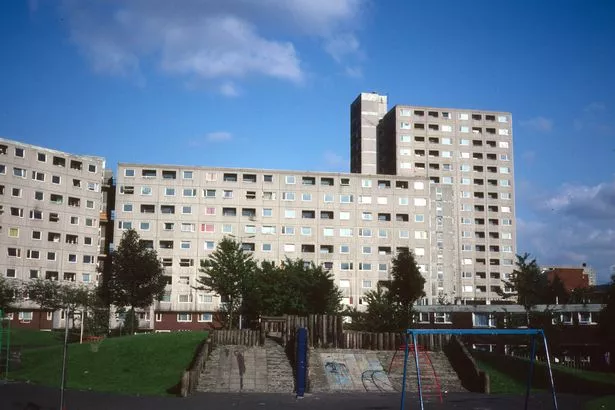 Moss Side District Centre and tower blocks. 1987(Image: By Miles Glendinning – https://doi.org/10.7488/ds/6241, CC BY 4.0)
Moss Side District Centre and tower blocks. 1987(Image: By Miles Glendinning – https://doi.org/10.7488/ds/6241, CC BY 4.0)
The confrontation was reportedly diffused when a community centre manager stepped in to explain the MP’s presence to the youth.
The youth – allegedly a familiar face on the streets since age 10 – was reportedly acting as a lookout for drug dealers.
Mr Ashdown claims he was told that 70% of mountain bike riding “mules” like the boy carried guns, with pistols being the most common, whilst others preferred sub-machine guns.
The demolition of the Moss Side district centre began in 1994, including the shopping precinct and surrounding tower blocks. Since that time, Moss Side has undergone significant redevelopment and regeneration.
